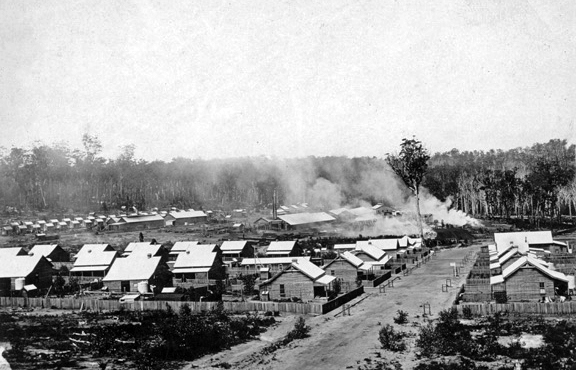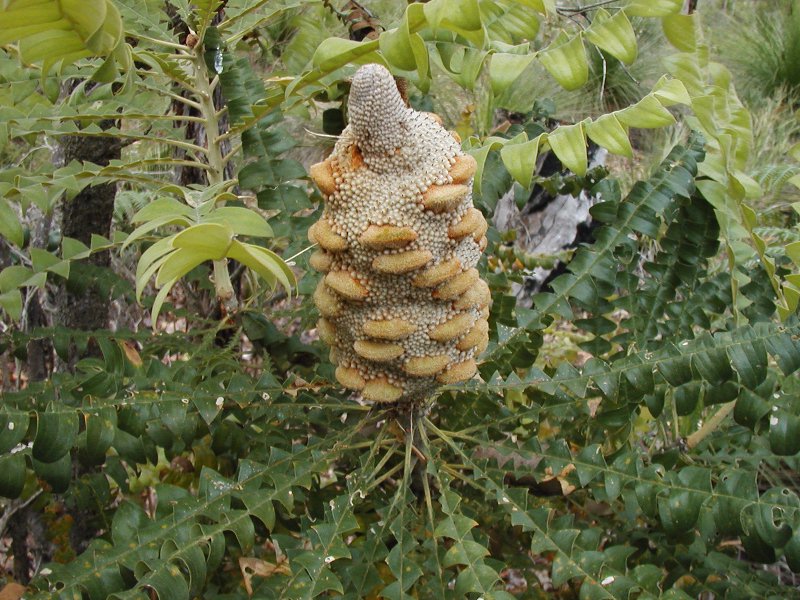|
Phytophthora Multivora
''Phytophthora multivora'' is a species of Oomycete, water moulds, identified as a plant pathogen implicated in dieback. It was first isolated in tuart forest of Southwest Australia in a study of the decline of tuart ''Eucalyptus gomphocephala'', jarrah ''Eucalyptus marginata'', peppermint ''Agonis'' and banksia species. The species was found to occur in dead and dying woody species, ''Eucalyptus gomphocephala'', ''E. marginata'', ''Agonis flexuosa'', banksias '' B. menziesii'' and '' B. grandis'' and at the fine roots of ''E. marginata'' and ''Banksia littoralis''. The study area included samples at Yalgorup, Jarrahdale, Wanneroo Wanneroo is a suburb of Perth, Western Australia, located within the City of Wanneroo. Geography As it is on the Swan Coastal Plain, the Wanneroo wetlands stretch parallel to the coastline and to the north and south of the suburb. Education W ..., Walpole and Pemberton in Western Australia. The epithet of the species is in reference to the wi ... [...More Info...] [...Related Items...] OR: [Wikipedia] [Google] [Baidu] |
Oomycete
Oomycota forms a distinct phylogenetic lineage of fungus-like eukaryotic microorganisms, called oomycetes (). They are filamentous and heterotrophic, and can reproduce both sexually and asexually. Sexual reproduction of an oospore is the result of contact between hyphae of male antheridia and female oogonia; these spores can overwinter and are known as resting spores. Asexual reproduction involves the formation of chlamydospores and sporangia, producing motile zoospores. Oomycetes occupy both saprophytic and pathogenic lifestyles, and include some of the most notorious pathogens of plants, causing devastating diseases such as late blight of potato and sudden oak death. One oomycete, the mycoparasite '' Pythium oligandrum'', is used for biocontrol, attacking plant pathogenic fungi. The oomycetes are also often referred to as water molds (or water moulds), although the water-preferring nature which led to that name is not true of most species, which are terrestrial pathogens. ... [...More Info...] [...Related Items...] OR: [Wikipedia] [Google] [Baidu] |
Banksia Littoralis
''Banksia littoralis'', commonly known as the swamp banksia, swamp oak, river banksia or seaside banksia and the western swamp banksia, is a species of tree that is Endemism, endemic to the south-west of Western Australia. The Noongar peoples know the plant as pungura, boongura or gwangia. It has rough, crumbly bark, linear, more or less serrated leaves arranged in Whorl (botany), whorls, yellow flowers and up to two hundred Follicle (fruit), follicles in each head. Description ''Banksia littoralis'' is a tree that typically grows up to around , sometimes to , with rough, crumbly bark and woolly-hairy stems. The leaves are arranged in whorls and are linear in shape, usually serrated in the upper half, long and wide on a Petiole (botany), petiole long. The flowers are arranged on a cylindrical head long and wide when the flowers open. The flowers are yellow with a perianth long and a hooked Gynoecium#Pistils, pistil long. Flowering occurs from March to July and the follic ... [...More Info...] [...Related Items...] OR: [Wikipedia] [Google] [Baidu] |
Water Mould Plant Pathogens And Diseases
Water (chemical formula ) is an inorganic, transparent, tasteless, odorless, and nearly colorless chemical substance, which is the main constituent of Earth's hydrosphere and the fluids of all known living organisms (in which it acts as a solvent). It is vital for all known forms of life, despite not providing food, energy or organic micronutrients. Its chemical formula, H2O, indicates that each of its molecules contains one oxygen and two hydrogen atoms, connected by covalent bonds. The hydrogen atoms are attached to the oxygen atom at an angle of 104.45°. "Water" is also the name of the liquid state of H2O at standard temperature and pressure. A number of natural states of water exist. It forms precipitation in the form of rain and aerosols in the form of fog. Clouds consist of suspended droplets of water and ice, its solid state. When finely divided, crystalline ice may precipitate in the form of snow. The gaseous state of water is steam or water vapor. Water co ... [...More Info...] [...Related Items...] OR: [Wikipedia] [Google] [Baidu] |
Pemberton, Western Australia
Pemberton is a town in the South West region of Western Australia, named after original settler Pemberton Walcott. History The region was originally occupied by the Bibbulmun people who knew the area as Wandergarup, which in their language meant 'plenty of water'. Following an expedition to the area in 1861 by Edward Reveley Brockman, his brother-in-law Gerald de Courcy Lefroy and his uncle Pemberton Walcott, in 1862 Brockman established Warren House homestead and station on the Warren River; Walcott, after whom the town would be named, established ''Karri Dale'' farm on the northern outskirts of the later townsite; and Lefroy established a farm and flour mill on Lefroy Brook (the current site of the 100 Year Forest). Walcott remained until at least 1867. By 1868 he was at Dwalganup Station near Boyup Brook, and in 1872 ''Karri Dale'' was for sale, marketed as a "four-roomed brick cottage, stockyards, cattle shed, good garden - stocked with fruit trees and permanent running ... [...More Info...] [...Related Items...] OR: [Wikipedia] [Google] [Baidu] |
Walpole, Western Australia
Walpole is a town in the south-western region of Western Australia, located approximately south southeast of Perth, and west of Denmark. Location and description Walpole lies very close to the northern point of the Walpole Inlet, from which it takes its name. The inlet in turn is named for the Walpole River, discovered in 1831 by Captain Thomas Bannister, and named by Governor Stirling for Captain W. Walpole, with whom he had served aboard HMS Warspite in 1808. The first European settlers to arrive in the area were Pierre Bellanger and his family in 1909. They travelled aboard the ''Grace Darling'' from Albany to take up of land. Land in the Walpole area was reserved for a national park in 1910, and the area subsequently became a popular holiday destination. Major development began to occur in the 1930s as part of the land settlement scheme. The railway reached Nornalup in 1929, and the Walpole town site was gazetted in 1933. The local electricity grid is remote and ... [...More Info...] [...Related Items...] OR: [Wikipedia] [Google] [Baidu] |
Wanneroo
Wanneroo is a suburb of Perth, Western Australia, located within the City of Wanneroo. Geography As it is on the Swan Coastal Plain, the Wanneroo wetlands stretch parallel to the coastline and to the north and south of the suburb. Education Within the suburb of Wanneroo, there are three primary schools: Wanneroo Primary School, East Wanneroo Primary School, and St Anthony's Catholic Primary School. Wanneroo also has one high school, Wanneroo Secondary College. Major events Since 1909, the Wanneroo Agricultural Show, the state's largest regional agricultural show, is held annually within Wanneroo, typically during late November. Transport The Transperth operated bus, route number 389, runs from Wanneroo to Perth, up and down Wanneroo Road. Other services are route 467, operating between Whitfords Station and Joondalup Station via East Wanneroo, and route 468 by Swan Transit Swan Transit is an Australian bus company operating Transperth services under contract to the Pub ... [...More Info...] [...Related Items...] OR: [Wikipedia] [Google] [Baidu] |
Banksia Grandis
''Banksia grandis'', commonly known as bull banksia or giant banksia, is a species of common and distinctive tree in the south-west of Western Australia. The Noongar peoples know the tree as beera, biara, boongura, gwangia, pira or peera. It has a fire-resistant main stem with thick bark, pinnatisect leaves with triangular side-lobes, pale yellow flowers and elliptical follicles in a large cone. Description ''Banksia grandis'' is usually a tree that typically grows to a height of high, sometimes to . It is also found in the form of a stunted, spreading shrub near the south coast, and whenever it occurs among granite rocks. Its trunks are short, stout and often crooked, with the rough grey bark characteristic of ''Banksia''. The leaves are pinnatisect long and wide on a petiole long, with between eight an twelve large triangular lobes on each side of the leaf. The leaves are shiny dark green on the upper surface and softy-hairy underneath. The flowers are borne in a s ... [...More Info...] [...Related Items...] OR: [Wikipedia] [Google] [Baidu] |
Forest Dieback
Forest dieback (also "", a German loan word) is a condition in trees or woody plants in which peripheral parts are killed, either by pathogens, parasites or conditions like acid rain, drought, and more. These episodes can have disastrous consequences such as reduced resiliency of the ecosystem, disappearing important symbiotic relationships and thresholds. Some tipping points for major climate change forecast in the next century are directly related to forest diebacks. Definition Forest dieback refers to the phenomenon of a stand of trees losing health and dying without an obvious cause. This condition is also known as forest decline, forest damage, canopy level dieback, and stand level dieback. This usually affects individual species of trees, but can also affect multiple species. Dieback is an episodic event and may take on many locations and shapes. It can be along the perimeter, at specific elevations, or dispersed throughout the forest ecosystem. Forest dieback presents i ... [...More Info...] [...Related Items...] OR: [Wikipedia] [Google] [Baidu] |
Banksia Menziesii
''Banksia menziesii'', commonly known as firewood banksia, is a species of flowering plant in the genus ''Banksia''. It is a gnarled tree up to tall, or a lower spreading shrub in the more northern parts of its range. The serrated leaves are dull green with new growth a paler grey green. The prominent autumn and winter inflorescences are often two-coloured red or pink and yellow, and their colour has given rise to more unusual common names such as port wine banksia and strawberry banksia. Yellow blooms are rarely seen. First described by the botanist Robert Brown in the early 19th century, no separate varieties of ''Banksia menziesii'' are recognised. It is found in Western Australia, from the Perth (32° S) region north to the Murchison River (27° S), and generally grows on sandy soils, in scrubland or low woodland. ''Banksia menziesii'' provides food for a wide array of invertebrate and vertebrate animals; birds and in particular honeyeaters are prominent visitors. A re ... [...More Info...] [...Related Items...] OR: [Wikipedia] [Google] [Baidu] |
Agonis Flexuosa
''Agonis flexuosa'' is a species of tree that grows in the south west of Western Australia. It is easily the most common of the ''Agonis'' species, and is one of the most recognisable trees of Western Australia, being commonly grown in parks and on road verges in Perth. The species is commonly known as Western Australian peppermint, Swan River peppermint or peppermint, and willow myrtle for its weeping habit. The Noongar peoples know the tree as Wanil, Wonnow, Wonong or Wannang. Description ''A. flexuosa'' occurs mainly as a small and robust tree, usually less than 10 metres tall, although it may grow to 15 metres. It has fibrous brown bark, long narrow dull-green leaves, and tightly clustered inflorescences of small white flowers in the axes. It grows in a weeping habit, and looks remarkably like the weeping willow from a distance. Leaves are narrow and reach a length of 150mm. It is most readily identified by the powerful odour of peppermint emitted when the leaves ... [...More Info...] [...Related Items...] OR: [Wikipedia] [Google] [Baidu] |
.png)


